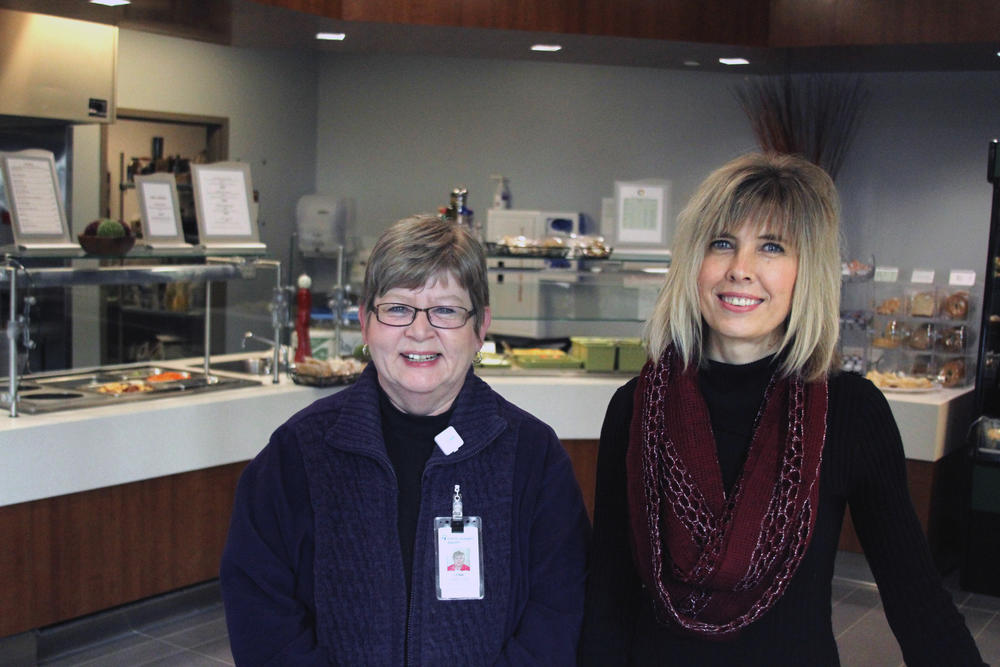The Hammond family sat at a table, both laughing out loud and quietly shedding tears as they reflected on the life of Levi Hammond.
“He just wanted to help,” said Levi’s sister, Karla, as her eyes welled with tears.

Her five words brought the room to a brief silence, as it almost perfectly summed up Levi’s short, yet accomplished life.
Levi, a married father of three young children and volunteer firefighter whose family said he put the Lord above all else, died Saturday morning at 36 during an avalanche while he was snowmobiling with friends in the Bighorn Mountains near Sheridan, Wyo.
Levi’s family said he lived life by going all out, whether he was fighting fires, studying the Gospel, selling farm equipment for Butler Machinery, or simply buying his wife, Becky, the best contact solution he could find.
“He didn’t have any concern for himself,” Becky Hammond said. “His concern truly was for others around him.”
Called to help
Levi’s tragic death isn’t just hitting his family hard. It has shocked fire departments in Dickinson, Beach and Golva, as well as the staff at Butler.
Dickinson Fire Chief Bob Sivak said it’s hard to think that someone who was as passionate about life as Levi is now gone.
“In a very real sense, we’ve lost a member of a family,” Sivak said. “This isn’t just a group of people that comes together now and then. There’s a real attachment in a fire service. His loss is truly felt and has truly hurt us.”
Levi spent two summers after high school as a firefighter for the U.S. Forest Service in Miles City, Mont., and continued as a volunteer member of his hometown Beach and Golva fire departments.
He became a state board-certified firefighter last May and Becky said he toyed with the idea of taking a full-time position with the Dickinson Fire Department when new openings were created. Sivak said he and Levi had a good talk about what doing that would mean.
“He prayed about it,” Becky said. “It was a definite no. He did say, ‘Becky, I know that I’m called to be a firefighter. I know that this is what I’m supposed to do.’”
Sivak recalled times after the department had wrapped up fighting a fire and Levi would be standing there sweaty and dirty with a smile on his face. Friends and family said it was nearly comical to see how invigorated Levi was the morning after a late-night call, even if it meant he didn’t get any sleep.
“He loved to help people,” said Ed Hammond, Levi’s father. “He just had a passion for it. He loved to be there. I suppose a lot of it was the adrenaline rush.”
Selfless role model
Tom Irwin, a Dickinson volunteer firefighter who is married to the Hammonds’ cousin, described Levi not only as a selfless role model, but a man who celebrated the achievements of his firefighting brothers.
After the downtown Dickinson fire last summer, where a woman and her child were rescued from their second-floor apartment by firefighters, Irwin said Levi carried enough pride for the whole department.
“Levi wasn’t even the guy who made that rescue, but he was on cloud nine for a couple weeks because one of his brothers had saved somebody,” Irwin said. “That’s the excitement he always carried. He always had a smile on his face.”
When Levi was working at his regular job, both Irwin and Kyle Johnson, manager at Butler Machinery, spoke of Levi as a man who often went overboard — usually at his own expense — to make sure his customers got what they needed.
“He’s just one of those type of employees who’s hard to replace, because he did a very good job at what he did,” Johnson said. “All you had to do was pick up the phone and call Levi, and he’d do what he could to help you out, whether you were a fellow employee or customer. He was there when you needed him.”
Chosen path
Ben Zachmann, Levi’s cousin and best friend, was with him the morning of his death and said Levi was excited about the opportunity to ride through the mountains that day.
While out on the trail, Zachmann recalled Levi saying, “I’m content and I could go home now.”
Later in the ride, the group came to a pair of paths. Levi took one path, while Zachmann and his wife and the rest of their party went in different directions. After a few minutes went by without seeing Levi, the Zachmanns went looking for him.
Using their emergency beacons, they found Levi buried by a snowslide.
Zachmann said he and his wife, a nurse, did everything they could to save Levi. But it was too late.
“They did so much,” said Cheryl Hammond, Levi’s mother. “They did more than anyone else would ever do.”
Godly father
While snowmobiling was his hobby and firefighting was his call, Zachmann said nothing mattered more to Levi than his children.
He leaves behind 6-year-old Gage, 4-year-old Bodey and 1-year-old Rawley.
“It was serving as father, being a husband and a Godly father to his kids that meant more to him than any hobby he had,” Zachmann said.
Becky paused and laughed as she described how Levi would play with his kids, or roll around with them on the floor regardless of who was watching.
“He didn’t care if he made himself look like a fool, if it was to have fun,” she said with a smile.
As the Hammond family prepares to say their final goodbyes, they say they’ll always remember how Levi kept faith and God close to his heart — even going as far away as Oklahoma to attend Bible college after graduating from Williston State College.
“Part of what’s giving us so much peace is knowing where he’s at right now,” said Josh Hammond, Levi’s brother. “He’s such a man of God.”



